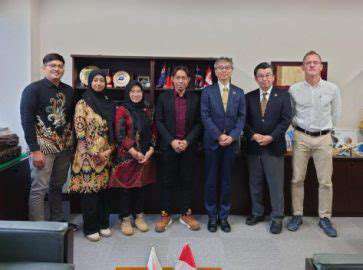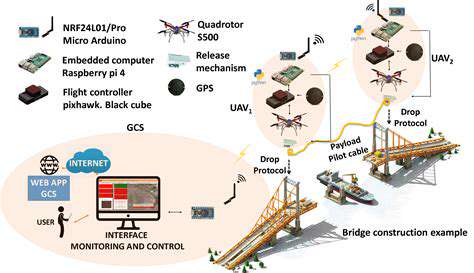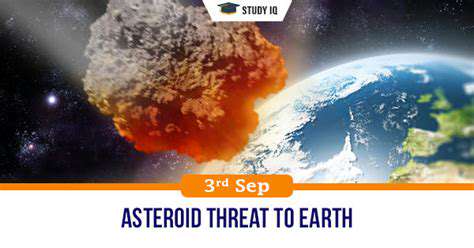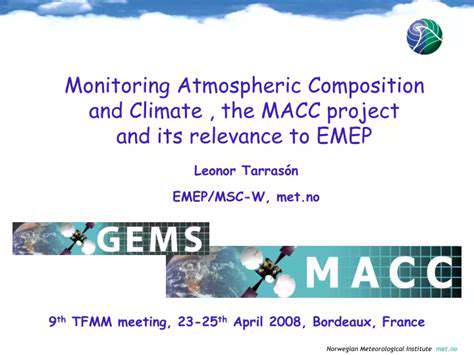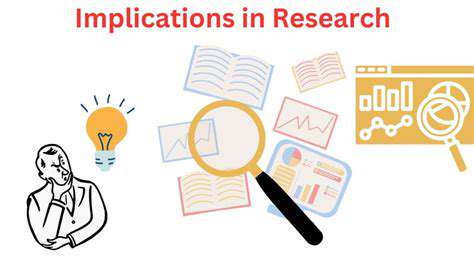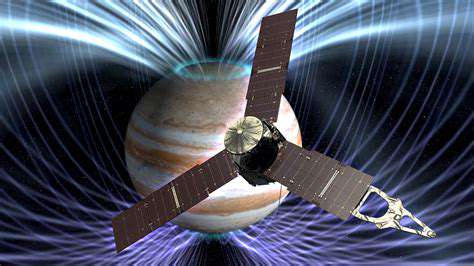Introduction to Satellite-Based Land Use Planning
Satellite Imagery in Land Use Planning
Satellite imagery, with its ability to capture large-scale, high-resolution views of the Earth's surface, is a fundamental tool in modern land use planning. This imagery provides crucial data on existing land cover types, infrastructure, and population density. Analyzing these visual records allows planners to identify areas suitable for development, conservation, or other land use interventions. The use of satellite imagery is particularly valuable in dynamic environments, such as rapidly urbanizing regions, where changes in land use occur at a fast pace, and traditional methods of data collection may not keep pace.
Different types of satellite imagery, each with varying spectral resolutions and spatial resolutions, cater to different needs. For example, high-resolution imagery can delineate individual buildings, while broader-scale imagery can provide insights into regional land cover patterns. This diverse range of options enables planners to tailor their analysis to specific project requirements and spatial scales.
Remote Sensing Techniques
Remote sensing, the process of gathering information about an object or phenomenon without physical contact, plays a pivotal role in satellite-based land use planning. Sophisticated sensors on satellites collect data across various electromagnetic spectrums, enabling the identification and categorization of different land cover types, such as forests, agricultural lands, and urban areas. These data sets are then processed and analyzed to extract valuable insights into land use patterns.
The use of techniques such as spectral analysis, image classification, and change detection algorithms allows for precise identification of alterations in land use over time. This temporal dimension is crucial for understanding trends and predicting future developments, enabling proactive land use management.
Data Processing and Analysis
The raw data acquired from satellites needs substantial processing and analysis to transform it into usable information for land use planning. This involves various steps, including atmospheric correction, geometric correction, and image enhancement to ensure the accuracy and reliability of the data. Advanced software tools and algorithms are used to classify different land cover types and identify changes over time.
Geographic Information Systems (GIS) are integral components in this process, enabling the spatial integration of satellite data with other relevant information, such as demographic data, transportation networks, and environmental regulations. This integrated approach allows for a comprehensive understanding of the area's characteristics and facilitates informed decision-making.
Predictive Modeling for Land Use
Satellite data can be instrumental in developing predictive models for future land use changes. By analyzing historical trends in land use, demographic patterns, and economic indicators, planners can forecast potential future developments. This allows for proactive measures to be taken to manage land use effectively and mitigate potential negative consequences, such as urban sprawl or environmental degradation.
Predictive modeling helps identify areas at risk of unsustainable development or environmental damage, enabling the implementation of appropriate policies and regulations to prevent these issues from arising.
Integration with Geographic Information Systems (GIS)
Geographic Information Systems (GIS) are essential tools for integrating satellite data with other relevant information, such as demographic data, infrastructure maps, and environmental regulations. By combining these diverse datasets, planners gain a holistic view of the area and can make informed decisions about land use allocation. GIS allows for spatial analysis, visualization, and modeling, supporting the creation of comprehensive land use plans.
The integration process facilitates the creation of thematic maps, allowing planners to identify areas suitable for specific land use types, such as residential areas, industrial zones, or conservation zones. This integration provides a powerful tool for visualizing and understanding the complexities of land use patterns.
Monitoring Land Use Changes
Satellite imagery provides a powerful mechanism for monitoring changes in land use over time. This capability is crucial for assessing the effectiveness of land use policies and regulations. By comparing satellite imagery from different time periods, planners can identify areas where changes have occurred and analyze the factors contributing to these changes.
This monitoring capability facilitates the adaptation of land use plans in response to evolving needs and circumstances. It allows for the identification of emerging trends, such as urban expansion or deforestation, and enables the implementation of targeted interventions to address these issues.
Challenges and Limitations
While satellite imagery offers significant advantages for land use planning, there are inherent challenges and limitations to consider. Cloud cover, for instance, can obscure satellite imagery, necessitating careful planning and scheduling of data collection. Furthermore, the interpretation of satellite imagery requires specialized skills and expertise to ensure accurate and reliable results. Data processing can also be computationally intensive, requiring significant resources.
Cost considerations are also a factor. Access to high-resolution satellite imagery can be expensive, potentially posing barriers for smaller communities or organizations with limited budgets. Finally, ensuring the accuracy and reliability of data, especially in areas with complex land use patterns, remains a challenge. Addressing these issues is crucial for the effective and equitable application of satellite-based land use planning techniques.

Applications of Satellite Imagery in Land Use Planning

Remote Sensing for Agriculture
Satellite imagery plays a crucial role in agricultural practices by providing valuable insights into crop health, land use, and resource management. Analyzing images allows farmers and researchers to monitor crop growth, identify areas experiencing stress or disease, and optimize irrigation strategies. This remote sensing data can be used to detect anomalies like waterlogging or nutrient deficiencies, enabling timely interventions to prevent crop losses. This detailed information helps in maximizing crop yields and minimizing environmental impact.
Furthermore, satellite imagery assists in mapping different agricultural land types, which helps in planning and implementing sustainable farming practices. The ability to monitor changes in land use over time is invaluable for understanding trends in deforestation, desertification, and agricultural expansion. This information is critical for policymakers and environmental organizations striving to implement sustainable land management practices.
Urban Planning and Development
Urban planners and developers utilize satellite imagery to understand urban growth patterns, assess infrastructure needs, and monitor environmental changes within cities. The ability to visualize urban sprawl, identify areas with high population density, and monitor the expansion of transportation networks are critical for making informed decisions about urban planning and development. This data is indispensable for creating sustainable and livable urban environments.
By analyzing satellite imagery, urban planners can identify areas needing improvements in infrastructure, such as water supply, sanitation, or transportation. This allows for efficient resource allocation and the development of targeted strategies to address specific needs. Furthermore, monitoring changes in land use and vegetation cover over time provides valuable insights into the impact of urbanization on the environment.
Environmental Monitoring
Satellite imagery is a powerful tool for monitoring and assessing environmental changes. It allows researchers to track deforestation, monitor the health of forests, and identify areas at risk from natural disasters. The ability to observe changes in vegetation cover over time is crucial for understanding the impact of climate change and human activities on ecosystems. This monitoring helps in identifying areas requiring conservation efforts and taking proactive measures to protect biodiversity.
Furthermore, satellite imagery can help identify and monitor pollution sources, such as industrial emissions or agricultural runoff. This information is crucial for environmental regulatory agencies and policymakers to develop effective policies and implement strategies to mitigate environmental damage. By providing a comprehensive view of environmental conditions, satellite imagery enables a proactive approach to environmental protection.
Disaster Management
Satellite imagery is critical in disaster management, providing crucial information before, during, and after natural disasters. Pre-disaster assessments can identify vulnerable areas, allowing for better preparedness and resource allocation. During a disaster, imagery can provide real-time information on the extent of damage, allowing for rapid response and aid distribution. Post-disaster analysis enables a better understanding of the impact, allowing for more effective recovery efforts.
This rapid assessment of damage is vital in coordinating relief efforts, identifying areas needing immediate assistance, and directing resources effectively. Satellite imagery enables a comprehensive overview of the affected region, enabling more informed decisions and actions by disaster response teams.
Coastal Zone Management
Satellite imagery provides crucial data for managing coastal zones, enabling the monitoring of coastal erosion, sea-level rise, and the impact of human activities on coastal ecosystems. Analyzing changes in shoreline features over time allows for the identification of areas at risk from coastal hazards. This data is essential for developing effective strategies for coastal protection and management.
Monitoring of Water Resources
Satellite imagery aids in the monitoring of water resources by providing insights into water bodies, river flow, and water quality. Analysis of water bodies allows for the identification of changes in water levels, which is crucial for understanding water availability and managing water resources effectively. The monitoring of water quality is essential for public health and environmental sustainability. By analyzing water quality indicators, policymakers can assess the health of water bodies and implement measures to protect water resources.


